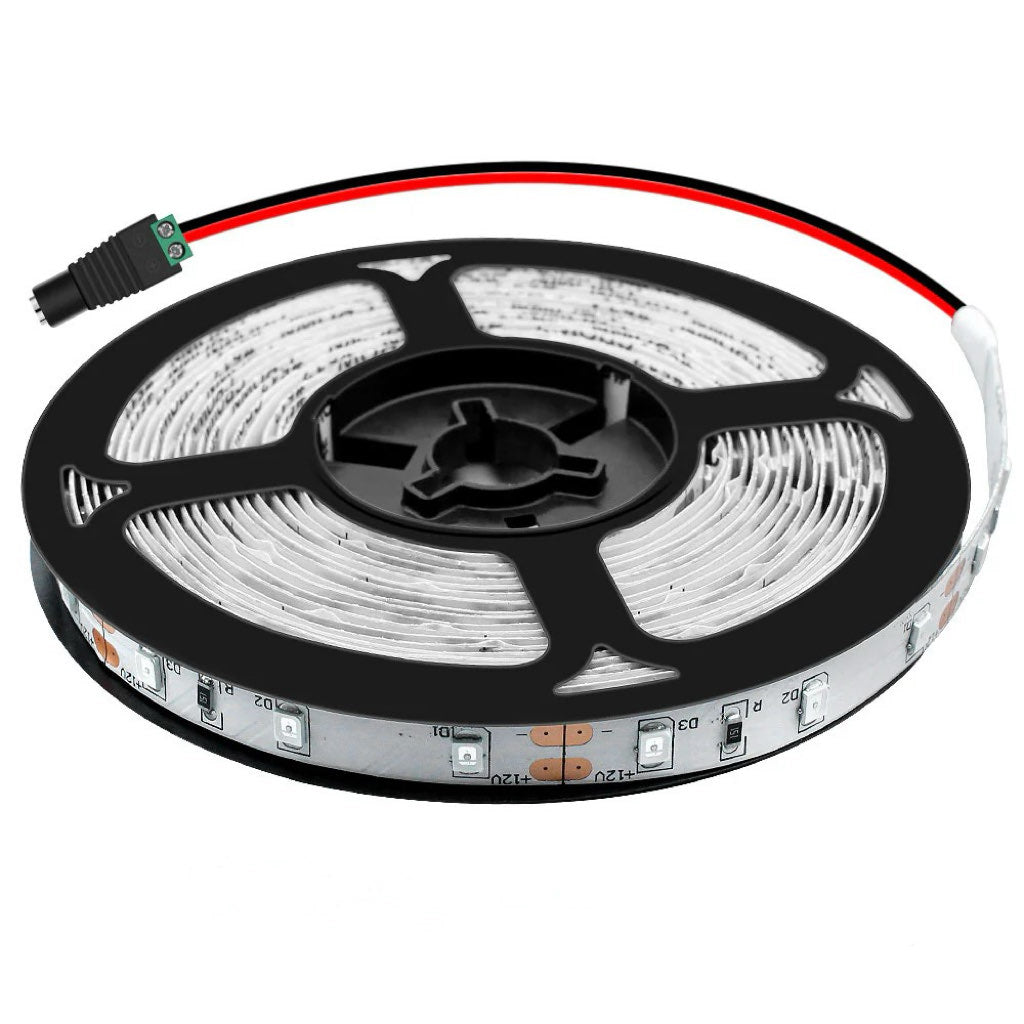In modern security systems, nighttime image quality directly determines the effectiveness of monitoring. With the development of infrared lighting technology, 850nm IR strip for CCTV and 940nm IR light for camera have become two of the most discussed options among integrators and engineers. Both are key components that enhance night vision through infrared illumination, but they differ significantly in performance, applicable scenarios, and camera compatibility.
This article provides a detailed analysis in four parts to help CCTV system users and security integrators make the right choice.
Distinct Performance of 850nm and 940nm in Security Applications
850nm infrared strips are the most widely used night vision lighting solution on the market. They emit a faint red glow that is barely visible to the human eye, and this wavelength offers higher infrared output efficiency, allowing cameras to capture brighter and clearer images in low-light conditions. They are commonly installed in areas that require high image detail, such as large warehouses, factory perimeters, and parking lots that are monitored continuously.
In contrast, 940nm infrared strips are true “invisible light sources.” They emit light that is virtually undetectable to the human eye, with no visible red glow at night, making them ideal where stealth is a priority. This type of strip is perfect for use in retail entrances, residential doorways, or high-end locations where you want to ensure security without light pollution or drawing attention.
Impact of Different Wavelengths on Camera Sensitivity
A camera’s infrared sensitivity curve usually spans from about 700nm to 1000nm. The 850nm region is the peak response for most CMOS and CCD sensors, which means cameras can capture stronger signals and produce brighter, clearer images under this illumination.
940nm infrared light falls in a weaker part of the camera’s sensitivity curve, resulting in slightly lower brightness compared to 850nm. However, with high‑sensitivity IR filters and modern image enhancement technology, cameras can still deliver clear night vision when paired with 940nm strips.
Below is a sample sensitivity curve illustrating camera response in the infrared band. The red dashed line highlights the strong response at 850nm, while the green dashed line indicates the range at 940nm:
Real-World Night Vision Examples with Clear Results
To give you a better sense of their performance, here are real-world scenarios where 850nm and 940nm infrared strips have been applied:
-
Retail Store Monitoring: Bright Images for Easy Review
A 24-hour convenience store installed multiple 850nm infrared strips above the checkout area and along the shelving edges, carefully hidden within the display structures. Even after store lights were turned off at night, the cameras captured clear details of shelves, customer movement, and checkout counters. Facial features and hand movements were easily identifiable, allowing the store owner to review video footage efficiently after hours and verify product placement and visitor activity. -
Factory Perimeter: Long-Range Coverage and Higher Security
A large manufacturing facility deployed multiple high‑power 850nm infrared strips along its perimeter fences, with strips installed at regular intervals. The strong output, combined with long-focus cameras, provided night footage nearly as clear as daytime. Security personnel could detect people or vehicles approaching from 50 meters away, significantly reducing response time to intrusion alarms. -
Home Entrance: Invisible Lighting to Protect Privacy
A residential user embedded 940nm infrared strips into the architectural details of a porch ceiling. The strips remained completely hidden and emitted no visible glow, yet the camera still received sufficient illumination to produce clear footage at night. This setup preserved family privacy while avoiding harsh light that could disturb neighbors.
These examples show that 850nm strips excel in scenarios that demand higher brightness and detailed clarity, while 940nm strips shine in environments where stealth and invisibility are crucial. Choosing the right wavelength based on your needs ensures your night monitoring is truly clear and reliable.
A Practical Guide to Selecting the Right IR Strip for Your Camera
When choosing an infrared strip, consider wavelength, heat output, lighting stealth, and installation compatibility. Here’s a quick guide to help you compare:
🔧 Key Selection Points
✅ Low Heat Design
High-quality strips use efficient heat-dissipating substrates and low‑power LEDs, ensuring stable performance over long hours and a longer lifespan.
✅ Invisible or Visible Output
-
For locations that require high stealth (such as retail entrances or home doorways), choose 940nm.
-
For areas that need brighter illumination (such as factory yards, warehouses, or long-range monitoring), choose 850nm.
✅ Camera Compatibility
Make sure your camera supports IR illumination and has an IR-cut filter to maximize performance.
📌 Recommended Models & Applications Overview
|
Wavelength |
Visibility |
Typical Applications |
Recommendation |
Model Numbers |
|
850nm |
Infrared (invisible, faint red dot) |
Night vision, IR sensors, perimeter security |
Higher brightness, ideal for long range |
|
|
940nm |
Infrared (completely invisible) |
Covert surveillance, camera IR filters, remote control |
High concealment, ideal for short range |
💡 Application Suggestions
-
For large projects: In large factory or warehouse areas, 850nm strips provide stronger output and longer illumination distance.
-
For home or retail: When total invisibility is desired, 940nm strips are the best choice, offering adequate brightness with no visible glow.
-
Flexible layouts: IR strips are roll-based, easy to cut and install, making them adaptable to various environments.
By considering brightness needs, stealth requirements, and installation environments, you can quickly choose the IR strip that best matches your camera setup.
Conclusion
Whether you are a security integrator, a systems engineer, or simply looking for a reliable night vision solution for your home, choosing between 850nm and 940nm infrared strips can greatly improve nighttime surveillance. We hope this detailed guide helps you make an informed decision.



Hinterlasse einen Kommentar
Diese Website ist durch hCaptcha geschützt und es gelten die allgemeinen Geschäftsbedingungen und Datenschutzbestimmungen von hCaptcha.